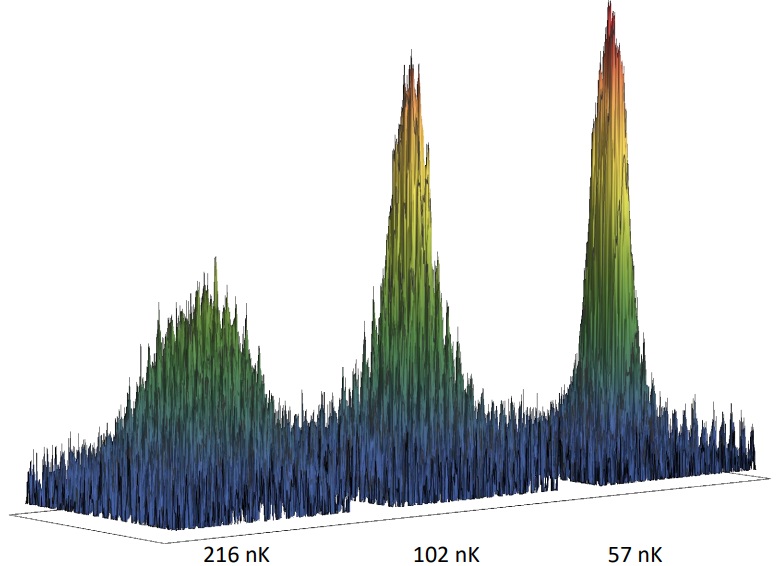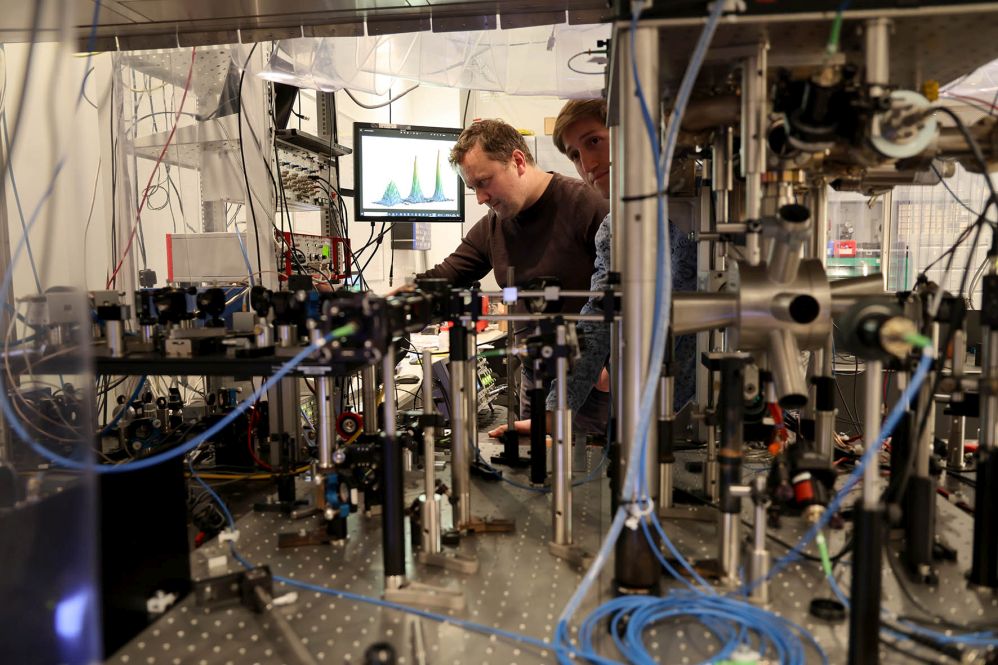At the Department of Photonics of the Jagiellonian University, a Bose-Einstein condensate of rubidium 87 atoms was produced at a record low temperature of 70 nanokelvins - the lowest ever achieved in Poland.
The condensate was produced by applying the laser cooling technique in an optical dipole trap equipped in a magnetic shield and more versatile than the one that was used in the first Polish experiment carried out in 2007 (also with the participation of researchers from the Jagiellonian University in cooperation with the National Laboratory in Toruń). For condensation to occur, it is necessary to create a cloud of atoms with a relatively high density (above 1013 atoms/cm3) and a very low temperature (below 1 µK). Under such conditions, a phase transition occurs between thermal gas atoms, which involves the macroscopic occupation of the ground state of trapped atoms, while maintaining the mutual coherence of the wave functions of all condensed atoms. This means, among other things, the possibility of observing the wave nature of matter not of individual particles, but on the entire ensemble.

The graphs above show the spatial distributions of the densities of the atomic cloud 30 ms after their release from the trap for three different phases of evaporative cooling, along with fitting theoretical predictions for thermal atoms (gray wide Gaussian function) and atoms in the condensate (narrower red Thomas-Fermi distribution). For a sufficiently low temperature, an increasingly larger contribution of the condensate fraction is visible. This type of measurements of the density distributions of atoms released from traps is the basic method of diagnosing ultracold atoms.

Powyższe wykresy przedstawiają przestrzenne rozkłady gęstości chmury atomowej po 30 ms od jej wypuszczenia z pułapki dla trzech różnych faz chłodzenia przez odparowanie, wraz dopasowaniem teoretycznych przewidywań dla rozkładów atomów termicznych (szara szeroka funkcja Gaussa) i atomów w kondensacie (węższy czerwony rozkład Thomasa-Fermiego). Dla dostatecznie niskiej temperatury, widoczny jest coraz większy udział frakcji kondensatowej. Tego typu pomiary rozkładów gęstości atomów wypuszczanych z pułapek są podstawową metodą diagnostyki ultrazimnych atomów.
Osiągnięty wynik pozwoli na kolejne eksperymenty z zakresu fizyki ultrazimnej materii i rozwinięcie technik precyzyjnej metrologii kwantowej.


